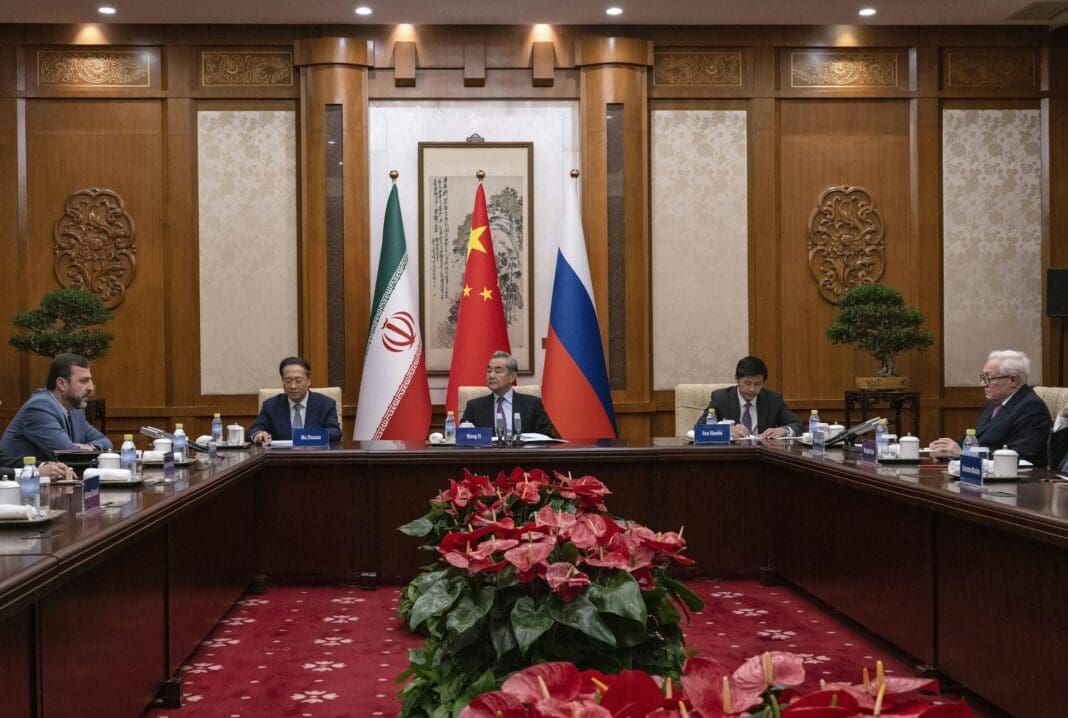Once upon a time, “revisionist power” was a term reserved for nations trying to overturn the postwar liberal order – the usual suspects being countries like Russia, China or Iran.
But lately, that concept is starting to fray. When Beijing’s top diplomat says the United States is the one disrupting global stability, and respected analysts argue that Washington itself is acting like a revisionist state, the label suddenly looks a lot less tidy.
And yet the term is everywhere – in think tank reports, in political speeches, in headlines about political hot spots.
But what does revisionist really mean? And why should we care?
At its core, “revisionist power” is a label applied to nations that want to change the way the world is ordered. The concept dates back to the period between the two world wars, when it described countries opposing the Treaty of Versailles that ended World War I. Political scientist Hans Morgenthau later distinguished between status quo powers and those seeking to overturn the balance of power.
The label itself was popularized in the mid-20th century, especially through A.F.K. Organski’s 1958 work on power transition, which defined revisionist powers as those dissatisfied with the existing order and determined to reshape it.
The change desired by nations can take many forms: redrawing borders, rebalancing regional power balances or creating alternative rules, norms and institutions to the ones that currently structure international politics. The key is that revisionists nations aren’t just unhappy with specific policies – they’re dissatisfied with the broader system and want to reshape it in fundamental ways.
The concept comes out of the realist tradition in international relations, which sees the world as an arena of power politics.
In that framework, countries operate in an anarchic international system with no higher authority to enforce the rules. The most powerful nations construct or impose a particular set of rules, norms and institutions on the international system, creating an order that reflects their values and serves their interests.
In this tradition, status quo powers benefit from the system and want to keep it more or less as it is. But revisionist powers see the system as constraining or unjust – and seek to alter it.
This doesn’t always mean war or open confrontation. Revisionism isn’t inherently aggressive, nor is it always destabilizing. It simply describes a nation’s support for or opposition to the prevailing international order. How that desire is expressed can include diplomacy, economic coercion or even armed conflict.
Consider Russia. Its annexation of Crimea in 2014 and its full-scale invasion of Ukraine in 2022 were not just violations of international law – they were clear efforts to overturn the post-Cold War, NATO-based security order in Europe. Russia was not lashing out at individual policies; it was challenging – or seeking to revise – the legitimacy of the existing system.
China presents a different kind of case. Beijing has made use of existing international institutions and benefited enormously from global trade, but it’s also been building alternatives, including regional banks, trade blocs and digital infrastructure designed to reduce dependence on Western systems. China’s expanding presence in the South China Sea, its pressure on Taiwan and its desire to shape global norms on everything from human rights to internet governance point to a broader effort to revise the current order – though more gradually than Russia’s approach.
Iran, meanwhile, operates mostly at the regional level. Through its support for proxy groups like Hezbollah, its influence in Iraq and Yemen, and its confrontational stance toward Israel and the Gulf monarchies, Iran has long sought to reshape the Middle East’s power dynamics. It’s not trying to rewrite the entire international system, but it’s certainly revisionist in the region.
Of course, calling a nation “revisionist” is not a neutral act. It reflects a judgment about whose vision of world order is legitimate and whose is not. A rising power might see itself as correcting historical imbalances, not disrupting stability. The term can be useful, but it can also obscure as much as it reveals.
Still, the label captures something real – though maybe not as cleanly as it used to. Much of today’s geopolitical tension does hinge on a basic divide: Some nations want to preserve the existing order, and others want to reshape it. But it’s no longer obvious who belongs in which camp.
Now, when the U.S. sidelines institutions it once championed, imposes extraterritorial sanctions or pushes for new tech and trade regimes that bypass rivals, it starts to blur the line between defender and challenger of the status quo.
Maybe the more useful question now isn’t just which great power is revisionist – but whether any of them are still committed to the post-World War II international order created in the U.S.’s image.
This article is part of a series explaining foreign policy terms commonly used, but rarely explained.
This article is republished from The Conversation, a nonprofit, independent news organization bringing you facts and trustworthy analysis to help you make sense of our complex world. It was written by: Andrew Latham, Macalester College
Read more: What is the rules-based order? How this global system has shifted from ‘liberal’ origins − and where it could be heading next What is isolationism? The history and politics of an often-maligned foreign policy concept The Global South is on the rise – but what exactly is the Global South?
Andrew Latham does not work for, consult, own shares in or receive funding from any company or organization that would benefit from this article, and has disclosed no relevant affiliations beyond their academic appointment.













